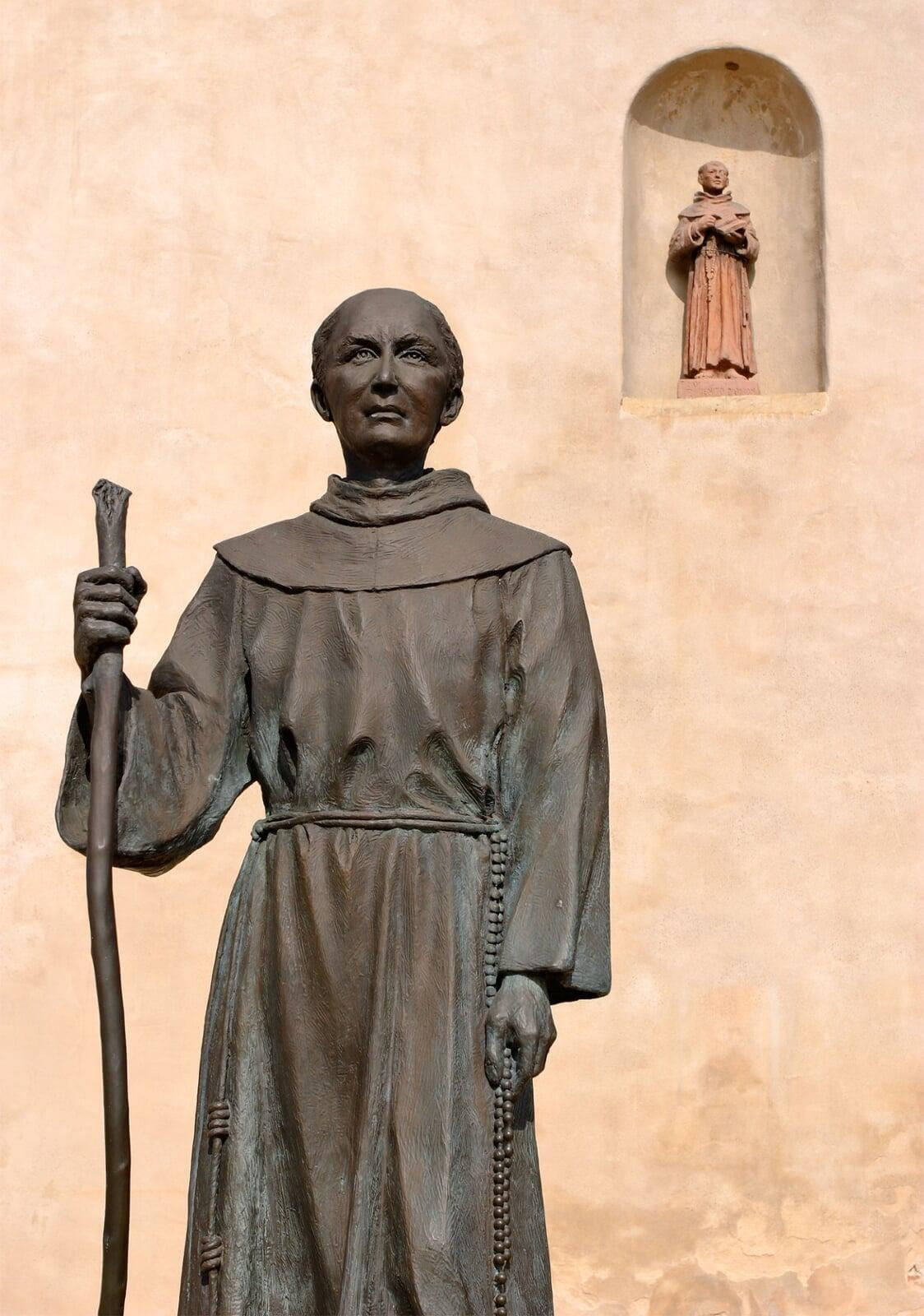The California Missions
Stretching from San Diego to Sonoma, the 21 missions of Alta California are storied reminders of California and our nation's past. Few regions of the world have such a physical, visual timeline of a nation's growth and development.
In 1769, under order of the Spanish king, sea and land expeditions departed Mexico for California, meeting in San Diego where the first fort and mission were established to serve as frontier outposts. The King sent military troops and Franciscan missionaries to the new land to colonize the territory and convert its Indian inhabitants to Christianity.
Over 54 years, four forts, or presidios, and twenty-one missions were founded along the California coast. Some of these sites eventually evolved into the state's major cities, including San Diego, Santa Barbara, San Jose and San Francisco.
Founding of the California missions began seven years before the American Declaration of Independence was signed in 1776, and ended 25 years before gold was discovered at Sutter's Mill in 1848. Mission expansion came to an end in 1823, when mission bells rang in Sonoma.

Saint Junípero Serra
Born on November 24, 1713, on the Spanish island of Majorca, Junipero Serra came from humble beginnings. His parents, Antonio Nadal Serra and Margarita Rosa Ferrer, spent their lives working the land in the town of Petra. They had him baptized on his first day in the world, giving him the name Miguel Jose. He was later educated by Franciscan monks at a local primary school. Serra was only 15 years old when he decided to join the priesthood. He moved to Palma to pursue his goal.
Serra then became a novice at the Convento de Jesus in September 1730. There he study theology and philosophy. The following year, Serra officially joined the Franciscans and took the name "Junipero" after a friend and associate of St. Francis. The exact date of his ordination into the priesthood is unknown. Experts estimate it was sometime between 1737 and 1739. Serra then devoted much of his time to teaching. In 1742, he earned his doctorate in theology from Lullian University.
Missionary in Mexico
In 1749, Serra took on a new challenge—bringing his faith to the New World as a missionary. He traveled first to Mexico with a former student, Francisco Palóu. Serra landed in Vera Cruz and walked 250 miles to Mexico City. Along the way, he suffered an injury to his leg, which would cause him pain the rest of his days. Serra joined College of San Fernando, a missionary school in Mexico City, but he didn't stay long. He volunteered for the Sierra Gorda missions in 1751, which were located in the lands of Pame Indians. Serra preached to the native people and sought ways to improve the area's economy.
During the late 1750s into the 1760s, Serra played many different roles at the College of San Fernando. He also continued his preaching on several different missions, including to Puebla and Oaxaca. In 1769, Serra began his journey northward where he would do some of his best-known work.
California Missions
Serra established his first mission in San Fernando de Velicatá in May 1769. Moving further north, he founded another mission in San Diego, first of nine missions he created in what is present-day California, that July. Serra spent the rest of his life devoted to his evangelical work in the region. In trying to bring his religion to the Native Americans sometimes led to clashes with his own government. He clashed with Spanish authorities over the way soldiers treated the native peoples. While he advocated on behalf of native peoples, Serra also sought to correct them when they broke the rules as well. He supported the use of corporal punishment for offenses.
On August 28, 1784, Serra died at the age of 70 at Mission San Carlos, the one of missions he founded. He was buried in the floor there. According to the Franciscan Friars, Province of Saint Barbara's website, Serra's first nine missions were home to more than 4,600 converted Native Americans and more than 6,700 Native Americans had been baptized through the missions by the end of 1784. After his death, Serra was remembered for his dedication to his faith and for bringing Catholicism to California. Beginning in the 1940s, a movement began to have him canonized. Pope John Paul II beatified Serra in 1988, giving him the title of "Blessed."
Controversy over Sainthood
In 2015, Pope Francis made Junipero Serra a saint during his first visit to the United States. A special mass was held at the Basilica of the National Shrine of the Immaculate Conception in Washington, D.C. on September 23. This service marked the country's first canonization. Pope Francis told the thousands who attended the mass that Serra "sought to defend the dignity of the native community, to protect it from those who had mistreated and abused it. Mistreatment and wrongs which today still trouble us, especially because of the hurt which they cause in the lives of many people."
